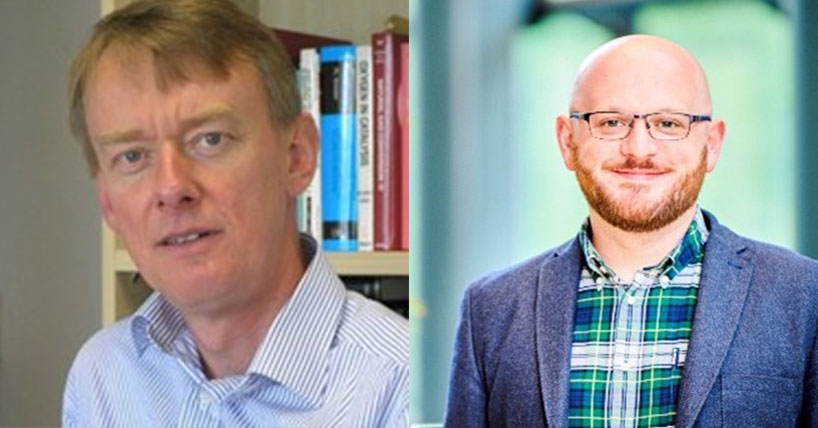Speak for Yersel
Speak for Yersel
Published on: 31 October 2024
New resources will create a digital snapshot of how language is used on the island of Ireland.
Diverse varieties
When you’re talking to a group of people, would you say you, youse, or ye? Would you ever say I’m pure ragin’? And do you pronounce meat the same as mate?
These are the kinds of questions asked in Speak for Yersel: Northern Ireland and Speak for Yersel: Republic of Ireland, two brand-new resources which will create a digital snapshot of how English on the island of Ireland and Scots in Ulster are used in the 21st century. They will map the diverse varieties heard from Ballycastle in the north to Ballycotton in the south. City-dwellers in Belfast and Dublin in the east can have their say alongside the rural populations of tiny villages like Belleek and Brandon in the west.
In three crowdsourced surveys, participants will be able to tell the researchers about the words, sounds and sentences they use. Do they prefer aye or yes? Do they have an extra vowel in film that makes it sound like they are saying filim? Would they ever use I’m after telling him or do they prefer I have (just) told him? After each question, their answer is instantly added to maps of Northern Ireland or the Republic of Ireland. They will be able to see at a glance how their usage differs from that of other respondents across the entire island of Ireland.

Languages and dialects
Karen Corrigan, Professor of Linguistics and English Language and Research Associate Dr Mary Robinson, of the School of English Literature, Language and Linguistics at Newcastle University, are leading the Northern Irish survey. They are collaborating with Dr Louis Strange from the University of Glasgow who is leading the Republic of Ireland one.
“Even as a child growing up in Armagh City, I was fascinated by the languages and dialects that surrounded me," explains Professor Karen Corrigan. “I wanted to know why my grandfather called me ‘Kjarn’ but younger people – including my parents – did not. Why did the neighbour across the road from the Republic of Ireland use ‘ye’ when she meant me and my sister when everyone else who lived around us preferred ‘youse’? Was there a reason for some people pronouncing the surname ‘Campbell’ as if it was the word ‘camel’? These new surveys which we’ve designed in collaboration with other teams across these islands will help us answer key questions like this island-wide.
“Just as importantly, it will also give us insights into whether my perceptions of how people spoke in the 20th century still apply. The resources will also allow us for the first time ever to document the major differences between all the Celtic Englishes of these islands. We should find out whether gutties as a word for ‘gym shoes’ really is confined to Northern Ireland. Does anyone north of the border recognise ‘tackies’ and where on these islands does ‘daps’ also mean some type of running shoe?"
Dr Robinson added: “There is no right or wrong way to speak English or Ulster Scots. These surveys aren’t exams, and there are no wrong answers. Instead, these resources recognise that there are as many valid ways to speak English and Ulster Scots as there are speakers of those varieties. We created these resources to showcase and celebrate the rich linguistic diversity that can be found all across the island of Ireland.
“By taking a descriptive point of view- focussing on how things are- rather than how some authority suggests they should be, we hope that these resources will empower people to use their unique varieties proudly, as they are part of the cultural heritage of the island of Ireland. Ultimately though, we hope people will have fun taking the surveys and thinking about the way they use language.”
Rich linguistic history
Dr Louis Strange, Lecturer in Sociolinguistics at the University of Glasgow said: “Ireland has such a rich linguistic history, including influences from Dutch, Scots, French and many other languages as well as those home-grown, distinctively Irish turns of phrase in English like ‘through-other’, which is a direct borrowing from Irish trína chéile, also meaning ‘disordered’. This makes Ireland a real treasure trove for linguists, but what’s unique is that people have such an interest, this real passion and love – this grá – for language in all its forms across the island…why one place has that particular accent, why we use that one word but you say something completely different.
“We can see how all these influences have shaped the way people use distinctive varieties of English and Ulster Scots across this small island today, but this project will help us understand more about how people’s language varies from place to place and from one person to the next. Where exactly do people say wean or bairn for ‘child’? Do people who speak Irish more regularly tend to use phrases borrowed from that language like They’re after doing the weekly shop more often than others who have no contact with the Irish language at all?”
The original Speak for Yersel project was an Arts and Humanities Research Council funded project on Scots at the University of Glasgow. More than 7,000 participants took online surveys about the words, sounds and sentences they use in day-to-day life. This crowdsourced data is now displayed on interactive maps of Scotland illustrating how 21st century Scots is spoken there.
The online surveys are available here:
- Speak For Yersel: Northern Ireland: https://speakforyersel.ac.uk/ni/
- Speak For Yersel: Republic of Ireland: https://speakforyersel.ac.uk/roi/



